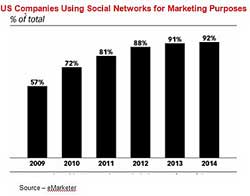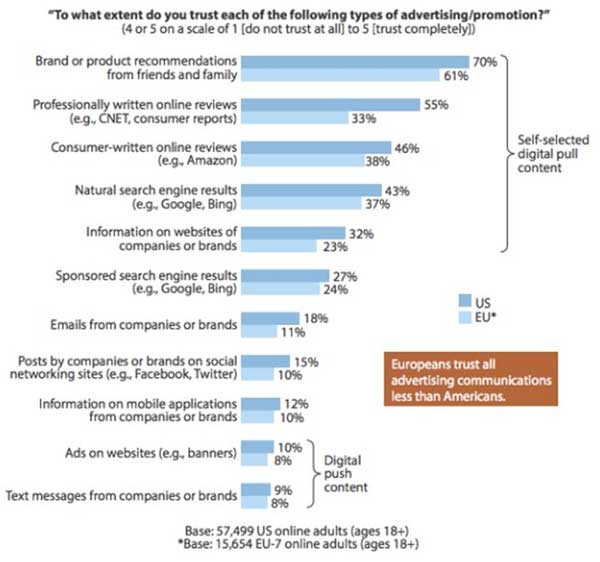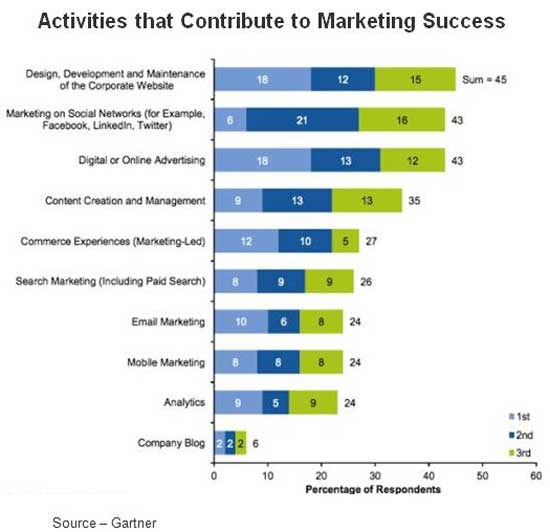While most social media gurus warn businesses they face irrelevancy or even bankruptcy if they don’t jump headlong into the social media ‘space’ – well, they would say that, wouldn’t they?
The following article carries a more nuanced approach to the uses – and abuses – of trying to conduct business on social networks – and notes that it would be a mistake to neglect your website in favour of social networking activities.
The argument here isn’t that there’s no place for business on social networks, but that they can’t be viewed as just another platform for one-way, ‘push’ marketing communications….

The biggest thing that’s wrong with social media marketing is consumers! They simply don’t understand that marketing is a fairly one-sided effort:
– You decide what the company, product, brand message is;
– You decide which avenues you’re going to use in contacting them; they’re supposed to repeat that message (without change) to friends, family;
– They’re supposed to buy the product or service in the store or online;
– They’re supposed to extol the features, benefits of the product/service to all of their ‘Friends’;
– The cycle is supposed to repeat.
Who knew consumers would suddenly expect to interact– not with the company but with real people, just as they do with others in the social media arena?
Only a few forward -looking, tuned-in marketing people recognised that businesses were going to be led down a path they couldn’t retreat from when they jumped on to social networks.
But the consumer liked the idea and pressed forward, spending more and more time on social media:
– They pressed to connect and share personal and contextual information;
– They became their own media channels publishing thoughts, ideas, images, videos and more;
– They created and deposited volumes of information and data about themselves;
– They posted – in text, photos, video – what they needed, wanted from companies, products, services;
– They expected companies and marketing people to listen to them and have conversations like real people;
But being personable/personal and making a true connection with the consumer isn’t what the automated marketing/sales team wants.
Instead, they’ll:
– Make a graph of their Twitter followers;
– Itemise their Facebook likes;
– Develop pie-charts on their customer service response speed;
– Produce spreadsheets on how often their messages were shared, Liked, retweeted;
– Highlight all the favorable customer feedback they received.
Customer contacts and relationships go beyond pass/fail grades because analytical tools are only beginning to address the ‘soft’ information beyond Like and Tweet/ReTweet. Evaluating and ranking relationships is always difficult.
If the organisation doesn’t live, breath, promote/practice their social media marketing internally, it’s just another one of your corporate, product marketing/communications tools.
And since it may be one that gets in the way of ‘real work’, you may even outsource it to someone who specialises in community management. It’s all about spitting out stuff to get responses, Likes.
There’s no follow-up, no next step, no business intent; it’s talking at people and filling out the report card that there was a great interaction.
That’s not a connection … that’s regular one-way communication with a fancy name!
It’s not that companies and product/brand managers don’t care, they’re pretty sure a close connection/interaction with customers is important now and even more important in the future.
Even as companies commit to major social media budgets, the objectives, measurements and results are often difficult to clarify and determine.
According to a recent Optus Future of Business report, businesses intend to expand and refine their social media activities over the next three to five years because it will improve their relationships.
The big hurdle for companies and their brands/products is that consumers view social media as a private/personal communications vehicle between friends, family and peers – not businesses.
Way too many companies see social media as an inexpensive marketing tool and consumers are only slowly warming to the idea of company engagement on ‘their’ turf.
As a result, social media marketing has to be part of a highly integrated program that includes interactive campaigns such as those carried out by Coke, Zappos, Cisco and Dell. Because their programs are outward looking in, these firms are being followed and recommended among people in their communities, circles.
Unfortunately, most organisations waste their time, money and effort by using conventional push social media communications.

In its digital marketing report, Forrester found that while US and Europeans reacted differently to various online messages, typical push marketing/communications efforts had almost no credibility.
The report validates that re-purposed marketing/communications activities won’t gain the social media following/relationship that everyone says they are working to achieve.
The importance of developing strong one-on-one relationships becomes apparent when you see that recommendations from friends and family provide the most effective social media marketing.
Professional and consumer reviews are also at the top of the most credible social media communications list.

Gartner’s recent marketing investment report found firms were surprisingly investing more in their corporate website, indicating that corporate managers are ‘optimistic but uncertain’ about aggressive social media marketing .
Gartner’s study pointed out that company websites should be given the same attention, look and feel in their landing pages and should provide compelling content and brand/product representation to keep pace with Facebook, Pinterest, LinkedIn and other social media sites.
Gartner feels that even as organisations understand that they must develop and nurture true consumer communications, the website will continue to be the underpinning of the organization’s social media efforts – internal and external.
The important thing to remember is that social media is based on communications. and it is effective only as long as the consumer allows it to be.
The consumer owns an organisation’s ability to market to them through the social media channels. Social media is a quid pro quo communications opportunity.
When company social media experts stop listening and silo the activity, rather than spreading it throughout the organisation, consumers will stop talking, stop caring, stop buying.
– Andy Marken





Be First to Comment